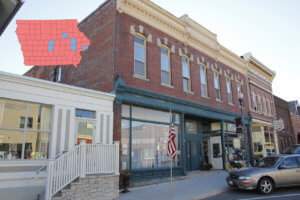West Long Branch, NJ – A significant number of Republican caucus-goers changed their minds over the final few days of the Iowa campaign – enough to account for the difference between pre-election polling and the actual result. The Monmouth University Poll re-contacted a panel of likely voters who took part in its final Iowa poll and found enough vote-switching to turn a pre-caucus Donald Trump lead into a Ted Cruz win on Monday night.
Monmouth re-contacted 263 likely voters who originally took part in its Iowa Republican survey conducted from January 23 to 26. The pre-caucus survey had Trump with a 7 point lead at that point, with 30% support to 23% for Cruz, 16% for Marco Rubio, and 10% for Ben Carson. In the end, Cruz actually won the caucus straw poll vote.
One source of potential error is that the poll’s likely voter screen created non-random error. No likely voter screen can predict with 100 percent accuracy who will vote and who will not vote. According to our re-contact panel, 81% of those who were considered likely to vote in the pre-election poll actually went to their local caucus site on Monday, while 19% did not.
Among those who initially supported Trump, 24% decided to stay home on caucus night. This is larger than the number of initial Cruz (13%) and Rubio (13%) supporters who did not participate. Also, only 16% of Carson’s initial supporters did not turn out. The non-participation rate was higher (24%) – and identical to Trump’s number – for supporters of the remaining candidates in the field.
Monmouth re-calculated the poll’s original candidate support results based only on those who actually turned out to caucus. This adjustment closed the gap between Trump and Cruz but would not have change the order of finish. The poll’s horse race results if non-voters could have been eliminated before the fact would have been Trump 28%, Cruz 25%, Rubio 17%, and Carson 10%. In other words, the results of the original poll would have been slightly improved if Monmouth had been able to predict with complete precision which “likely voters” would show up on Monday. However, this adjustment still would not have accurately predicted who would win the caucus.
Monmouth also asked the panel’s voters who they actually supported in the caucus. Those who did not participate were asked who they would have supported if they had been able to attend. While this latter component is an imperfect measure, it does give a general sense of what the original poll results would have looked like if the final intentions of all “likely voters” could have been accurately foretold. In this case, the readjusted “crystal ball” vote tally would have shown a narrow Cruz lead of 29% to 28% for Trump, with Rubio at 18% and Carson at 11%. This adjustment, if it could have been predicted, would have correctly forecast the final candidate order.
Taking into account both the actual turnout of the pre-caucus poll’s “likely voters” and the shifts in candidate support among those who did caucus further improves the poll’s final estimate. Among those who reported attending their local caucus, 79% ultimately supported the candidate they named in the pre-election poll, but a sizable 21% ended up supporting a different candidate. Among the top four finishers in Iowa, Cruz was the least likely to lose his initial support – only 6% of those who turned out reported changing their vote to another candidate. Rubio (12%) and Trump (15%) were also less likely than most candidates to lose the backing of their initial supporters who showed up on Monday night. While most of Carson’s initial supporters did caucus on Monday, nearly one-third of them (30%) changed their mind about who to support. More than half (54%) of those who supported any of the other candidates a week beforehand actually changed their vote by the time they caucused.
Among actual caucusgoers who switched their votes, about 1-in-4 changed to Cruz, just over 1-in-5 changed to Rubio, 1-in-6 went to Carson, 1-in-7 went to Trump, and the remaining 1-in-5 went to other candidates. Taking all these shifts into account, the final vote tally for actual caucusgoers who participated in the Monmouth poll – including those who stuck with their original candidate choice and those who switched their vote – was 29% for Cruz, 27% for Trump, 20% for Rubio, and 11% for Carson. This is very close to the actual caucus result which showed Cruz with a 3.3% margin of victory and Rubio surging in the final days.
Monmouth asked voters who changed their minds between the poll and Monday night why they did so. The top concern of these vote-switchers was a candidate’s electability and the desire not to waste their vote (33%). Others said they soured on their original candidate choice or felt the candidate did not campaign in the state enough (26%). Another 24% cited a candidate’s personal qualities or likeability, 21% decided to go with a candidate whose issue stands were more closely aligned with theirs, and 8% pointed to a candidate’s leadership or experience as the reason for their change of mind. [Note: these results add to more than 100% because multiple responses were accepted.] .
The desire to be with a winner or not waste their vote was cited by 7-in-10 of those who switched their vote to Rubio and half of those who switched to Cruz. Among those who left Trump for another candidate, fully half said the main reason was that they were unhappy with his candidacy, including both his personality and the amount of time he devoted to Iowa such as his decision to skip the final debate (which was held after Monmouth’s original poll was conducted). Among voters who abandoned any of the candidates who finished outside of the top three in Iowa, the most common reason given – by more than 4-in-10 of these voters – was concern about electability and the desire to support someone who may have a better chance at the nomination.
Commentary from Patrick Murray, director of the Monmouth University Polling Institute:
“The media has focused on the fact that polls conducted in the final week before the Iowa caucuses failed to predict the outcome of the Republican contest. This is indeed true. However, polls are not predictive tools. The headline of our January 27 poll release was ‘Trump Takes Caucus Lead.’ It was not ‘Trump Will Win the Caucuses.’
“The better question to ask is whether the polls were accurate. And they can only be accurate as of the day they were taken. They only match the outcome of an election if practically nothing changes between the poll date and Election Day. In other words, they can only ‘predict’ an outcome in advance if the entire electoral dynamic is basically frozen in those final few days of the race.
“Historically, pre-election polls have been accurate precisely because very little does change in the final few days of most elections. However, the Iowa caucuses and New Hampshire presidential primaries are notorious for their volatility. For one thing, these voters know that the eyes of the entire country are upon them. The comments of those in our poll who changed their vote choice suggest that some voters were concerned about making sure the Iowa results framed how the presidential nominating contest would develop.
“Furthermore, these voters are bombarded with campaign messaging and information to a degree that is not even close to any other election anywhere else in the country – including subsequent presidential primary states. It seems that this glut of information makes it harder rather than easier for many of these voters to make up their minds. It also makes their final decision less predictable. For most elections I have polled, it is usually fairly easy to determine the probable choice of undecided voters by looking at their views of the different candidates and a few other factors. Even when exit polls suggest that there may be a large number of voters who ‘made up their minds’ in the final few days, for the most part these are people who simply settled on the candidate toward whom they were leaning all along.
“The Iowa Republican caucuses were a different story. The National Election Pool’s entrance poll reported that more than one-third of Republican caucusgoers made up their minds in the final few days. The results of Monmouth’s panel study suggest that the vast majority of these late deciders switched support from what they intended to do just one week before, rather than settle on the candidate who they were previously leaning toward.
“Most pre-election polls, including Monmouth’s suggested that Trump’s support was solid – in the sense that few of these voters would change horses. This was true. The problem for Trump is that he had a high number of supporters who chose not to show up on caucus night, which was a potential outcome that nagged at most pollsters in the run-up to Iowa. This contrasts sharply with support for Cruz. Not only did nearly all his initial supporters show up on Monday, but only a handful of them abandoned their guy when they got into the caucus room. On the other hand, the late shift to Rubio seems to have come largely from voters who were concerned about viability – either the need to stop Trump or Cruz or simply the desire to back a ‘winner’ – pulled them into Rubio’s camp.
“Take all these moving pieces together and you have a recipe for why the polls failed to predict the final outcome. It’s simply because they could not have. Even if Monmouth had determined who was and who was not a likely voter with pinpoint accuracy, we still would not have known the correct winner based on Iowa voters’ intentions six days before the caucus. The only thing that would have improved our model enough to reflect the final outcome would have been a time machine. The polling industry is tackling a number of methodological challenges in our industry right now. Unfortunately, the ability to manipulate the time-space vortex is not one of the technological innovations we are currently exploring.”
***************************
Methodological note:
More than half (53%) of the original survey’s pool of 500 likely voters participated in post-caucus interviews conducted Tuesday through Thursday (Feb. 2-4). The panel survey was weighted to match each candidate’s support share in the original pre-caucus survey. The panel sample aligned with the original likely voter sample on key demographics such as party registration, past voting history, gender, age, and evangelical status.
Of note, 86% of registered Republicans in the original likely voter sample with a history of voting in state primaries actually participated in the caucus on Monday. A slightly smaller 70% of registered Republicans who are not regular primary voters came out on caucus night. Far fewer independents (52%) who said they would caucus actually did so, although this group represented only one-tenth of the total likely voter sample to begin with.
Among other groups, men (85%), voters age 50 and older (85%), and past caucus-goers (84%) were slightly more likely than women (75%), voters under age 50 (75%), and would-be first time caucusgoers (73%) to actually show up on Monday. However, once they got into their caucuses, there were no significant demographic differences between those who stuck with their original candidate choice and those who changed their minds.
The biggest surprise may have been that the record high GOP turnout in Iowa did not boost Trump’s result. Indeed, Monmouth’s own poll suggested that Trump was ahead on a turnout estimate of approximately 170,000. In actuality, just over 185,000 Republicans participated in Monday’s caucuses which saw Cruz in the winner’s circle. It appears probable that the turnout in the original Monmouth poll was off by about 20%. In other words, the final result as released on January 27 th actually represented a projected turnout of about 205,000, and that Cruz would do better as turnout went down from that point. However, as described above, utilizing a revised downward turnout estimate still would not have forecast Cruz’s victory. It still came down to last minute shifts in the actual vote decision.




